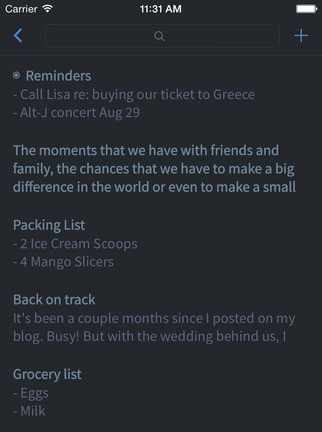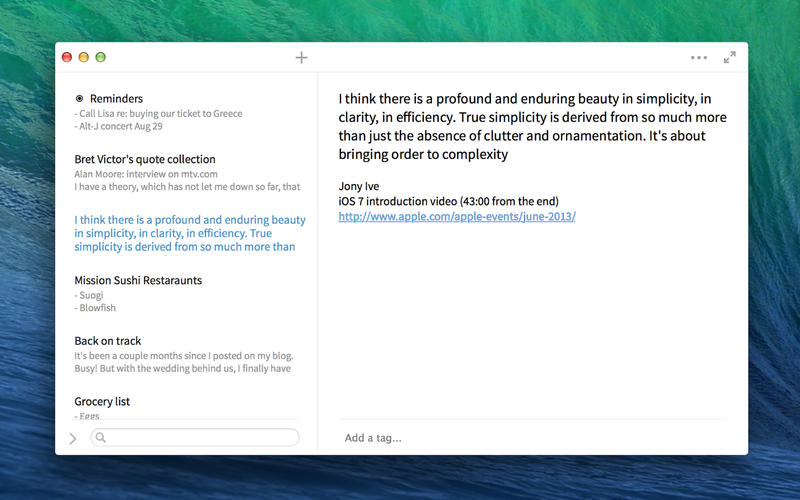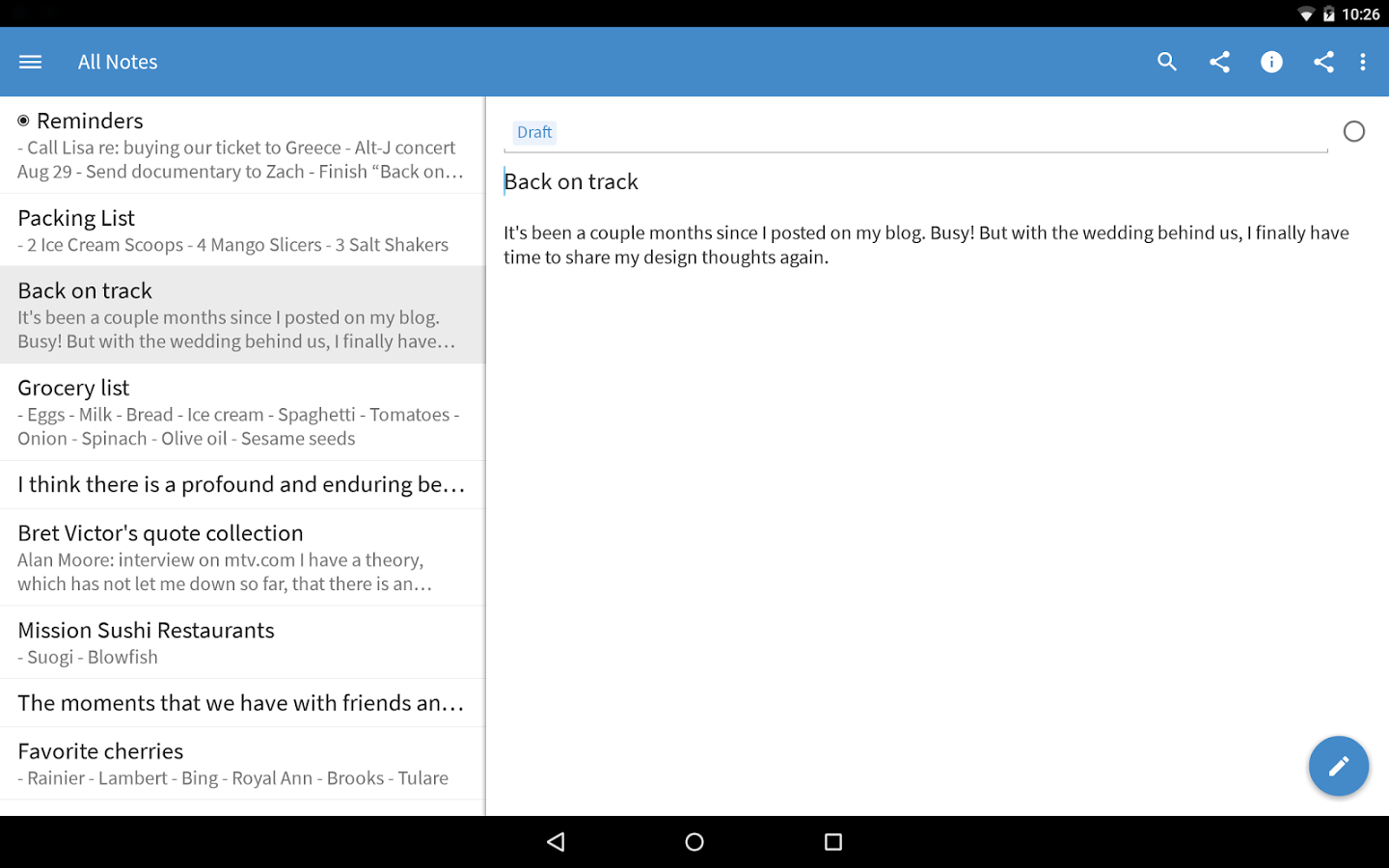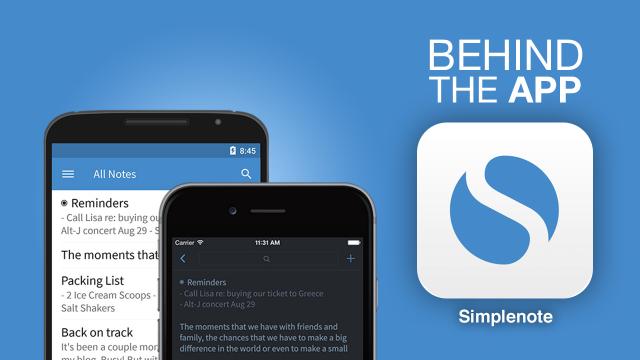When just want to write something down, too many bells and whistles in an app can hinder your work rather than help. Such is why there is Simplenote, a minimalist note-taking app and site that prioritises brusque but elegant functionality over superfluous features.
Simplenote started as a learning experience for creators, Fred Cheng and Michael Johnston, co-founders of Simperium (later acquired by Automattic); they needed to learn how to build iPhone apps, so they started working on an app that would be useful in their daily lives. It wasn’t a hit overnight, but Simplenote’s popularity slowly snowballed and now it’s available on a variety of platforms. We caught up with Fred and Mike to hear a bit of their story behind the app.
Where did the idea for the app come from? Were you trying to solve a problem you’d experienced, or did the inspiration come from somewhere else?
Fred and Mike: In 2008, during the time of the first iPhone and Android phones, three of us (Mike Johnston, Eric Chu, Fred Cheng) had moved to Buenos Aires to work on projects and start our own company. Our main interest was mobile. Simplenote was an app we decided to build to figure out how to build iPhone apps, and also because the first iPhone didn’t have search at all. Later we added sync because we needed an easy way to get addresses and directions from our computers to our phones.
After you came up with the idea, what was the next step?

We didn’t have huge expectations. We were working on multiple projects, but we kept iterating based on our own needs and the user feedback we got. Eventually there were enough users and feedback that we realised we had found something interesting. We stopped the other projects to focus on Simplenote.
How did you choose which platforms to target and which to ignore or wait on?
Simplenote started as a project to figure out how to build for iOS. Before that we worked on a pretty big project for the very first Android device. We had a chance to use it in person before it was released, and we weren’t big fans. Switching to iPhone development felt like an easy choice and a good way to focus since we were a small team.
What was your biggest roadblock and how did you overcome it?
Getting more users was difficult in the beginning. We hired a PR firm one month, but it didn’t move the needle. Posting on forums and just being proactive with customer support seemed to work best.
What was launch like for you?
The very first launch was not very eventful. We had downloads that numbered in the dozens per day perhaps. We emailed John Gruber about the app and he had some feature requests and feedback. Eventually he posted about it on Daring Fireball, and we had our first big day of downloads. It wasn’t an overnight hit from there, but our users grew steadily and we gradually noticed more posts about Simplenote (on Lifehacker as well!).

How do you handle user requests and criticisms effectively?
We’ve always valued user feedback. Sometimes it can be harsh if we’ve introduced a bug, but we try to keep in mind that these notes can be a very important part of people’s lives and that they probably wouldn’t bother to send feedback if they didn’t care.
Now, how do you split time between developing new features and managing existing ones?
Now that Simplenote has been acquired by Automattic, we need to juggle other priorities as well. Mostly we’re maintaining existing features, but we try to make room for some bigger releases as well. For example we were finally able to release an Android app and a desktop Mac app, something we had wanted to do for a long time.

The appeal of Simplenote is its simplicity, speed and lack of clutter; how do you keep it feeling “new” without adding needless features?
It’s very tough keeping it feeling new. We do have plans for some new features related to collaboration, but like you said, the appeal is simplicity, so we’re very wary of adding anything that strays from the original spirit of Simplenote. We’ve also tried to keep things fresh by doing a major overhaul of the visual design about once every year or two.
What advice would you give to others that want to take on a similar project?
Fred: Simplenote was a side project that grew to be something more — so I would say to keep an open mind on where things can go.
Mike: This has been on my mind a lot since I just decided to start a brand new project again. There’s no formula, but I think you need to mix people, passion, and persistence in a way that works best for you, and go for it. It helps to have some luck along the way, but you can create opportunities for luck and be prepared for it when it comes.
Lifehacker’s Behind the App series gives an inside look at how some of our favourite apps came to be — from idea to launch (and beyond).

Comments